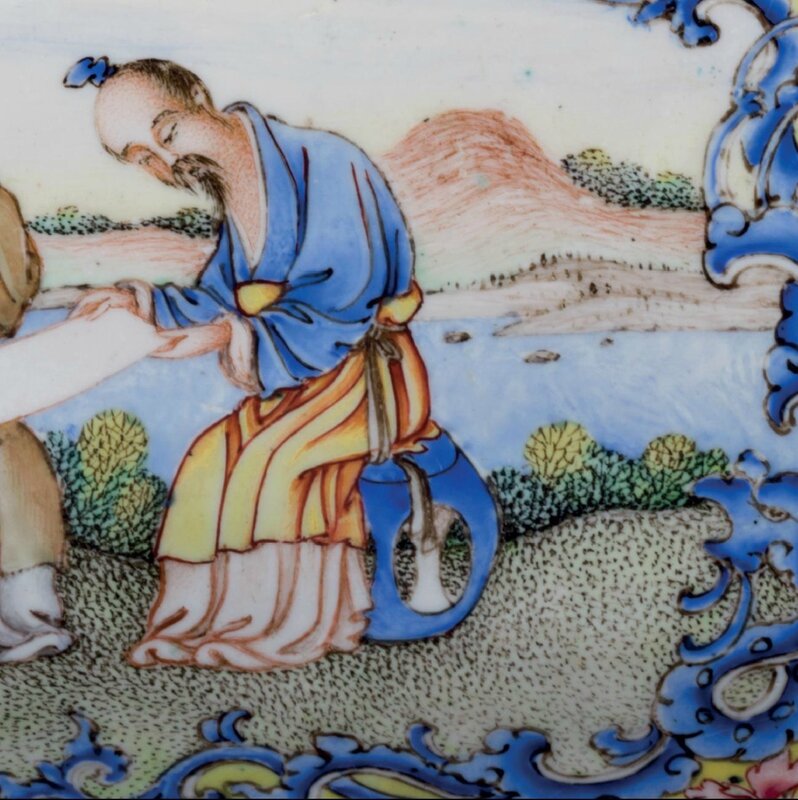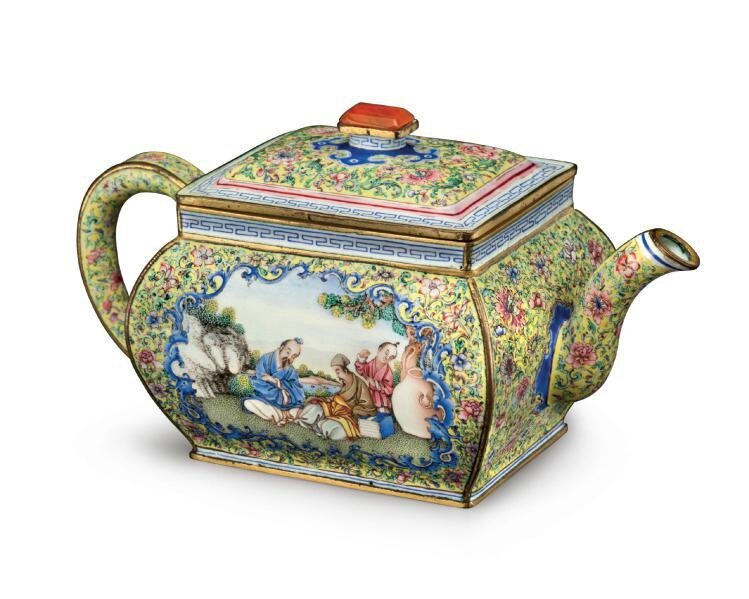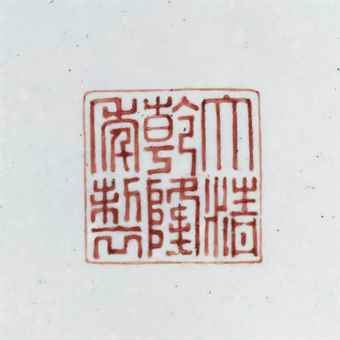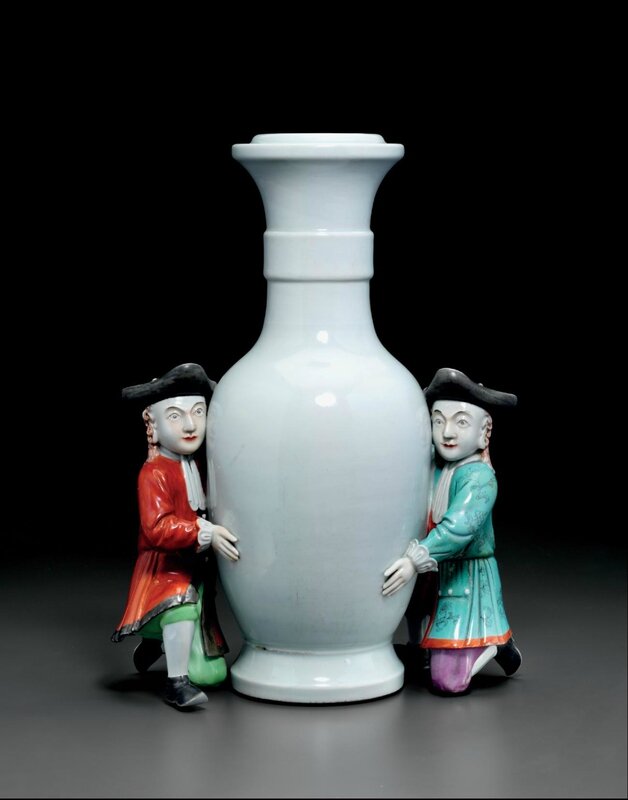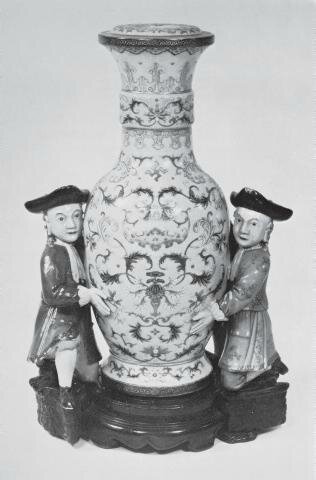![A rare famille-rose and pale celadon-glazed vase-shaped support with European figures, Qianlong period (1736-1795)]()
![1]()
A rare famille-rose and pale celadon-glazed vase-shaped support with European figures, Qianlong period (1736-1795). Estimate 60,000 – $80,000. Photo Christie's Image Ltd 2015
The elongated, ovoid support has a ringed neck with everted rim that narrows at top to a raised band and the narrow mouth, and is supported on either side by a kneeling European wearing a tricorn hat, one dressed in an iron-red coat with brown borders and green breeches, the other an iron-red bordered turquoise coat patterned with black floral sprays and puce breeches. The flat, unglazed base is raised slightly above the footrim and has a central aperture. 16 in. (40.7 cm.) high
Provenance: John T. Dorrance, Jr. (1919-1989) Collection; Sotheby's New York, 20-21 October 1989, lot 400.
Private collection, New York.
The Chinese Porcelain Company, New York.
Literature: The Chinese Porcelain Company - A Dealer's Record 1985-2000, New York, 2000, p. 185.
Notes: The imagery of foreigners paying tribute to the Imperial Qing court was an auspicious theme that was particularly favored by the Qianlong Emperor. Scenes of tribute bearers were successfully enameled on a number of ceramics such as the Qianlong-marked vase in the National Palace Museum, Taipei, illustrated in the Special Exhibition of Ch'ing Dynasty Enamelled Porcelains of the Imperial Ateliers, Taipei, 1992, p. 275, no. 141. Tribute scenes also found popularity in court paintings, such as the anonymous hanging scroll, 'Envoys from Vassal States and Foreign Countries Presenting Tribute to the Emperor', in the Palace Museum Collection, illustrated in Paintings by Court Artists of the Qing Court, The Complete Collection of the Treasures of the Palace Museum, Hong Kong, 1996, pp. 240-241, no. 64. Rarely, objects were made showing Europeans bearing tribute objects. A set of eight ivory and painted figures of kneeling Europeans, each carrying or supporting a different Buddhist emblem, was exhibited at the International Exhibition of Chinese Art at the Royal Academy of Arts in London in 1935-36 (one was included in the catalogue, no. 2315), six of the set were later owned by Mr. and Mrs. Rafi Mottahedeh and illustrated by D. Howard and J. Ayers inChina for the West, vol. 2, pp. 663-65, nos. 688 a-c.
Vessels such as the present vase, featuring figural supports modeled as Europeans, are also exceedingly rare. While figures of European couples, which included a similarly dressed gentleman with tricorn hat, were produced in the Qianlong period for export to Europe, it seems likely that the present vase was produced for domestic, if not imperial, use (see W. Sargent, The Copeland Collection, Chinese and Japanese Figures, Peabody Museum of Art, 1991, p. 220, no. 106, for a figural group of a European couple). A rare faux-bois barrel-form jardinière in the Espirito Santo Collection, Lisbon, features three Europeans similar to those found on the present vase, and exhibits another instance of European tribute bearers carrying a Chinese-taste vessel (see M. Beurdeley, China Trade Porcelain, Rutland, 1962, p. 121, pl. XXII). A vase very similar to the present vase, with European figural supports and decorated in famille roseenamels with auspicious Chinese motifs, and bearing a Qianlong mark, indicating imperial taste, was sold at Christie’s London, 20 July 1970, lot 79 (Fig. 1). The present example does differ slightly from the above-mentioned vase in the treatment of the base, which was deliberately pierced before firing and features an unusual unglazed, flat, raised ring around the opening. Because of this construction, and the unusually heavy weight, it appears likely that it was made as some type of support, or perhaps as a holder for a staff or banner.
![2]()
Fig. 1. A vase with European fgural supports and decorated in famille rose enamels, Qianlong mark and period, sold at Christie’s London, 20 July 1970, lot 79.
Christie’s. FINE CHINESE CERAMICS AND WORKS OF ART, 17 - 18 September 2015, New York, Rockefeller Plaza












